Enjoy Guided Pheasant Hunting at The Wilderness Reserve
When it comes to bird hunting, the dog can make all the difference. Here at The Wilderness Reserve, we strive to make the hunting experience fully accessible to all, and that includes guided pheasant hunting for those who don’t have their own fully trained gun dogs. This is why we are pleased to have a professional guide and gun dog trainer, Walt Noa, on the Wilderness Team.
Professional Pheasant Hunting Guide
Walt brings years of bird hunting and outdoors experience to the Wilderness Team. He has been guiding preserve hunts for over 30 years, and loves the unique challenge that each game bird provides. In addition to guiding pheasant hunts at The Wilderness Reserve, Walt operates the Black Duck Hunting Preserve in Rapid River, Michigan.
The Rapid River preserve offers bird, deer and bear hunts, and is home to the U.P. Bird Hunters Association, with over 50 members. The group takes a fun approach to bird hunting and holds monthly meetings to fine tune both knowledge and skills. The Black Duck Hunting Preserve also hosts the Double Gun Classic, a side-by-side shotgun 3 day tournament held in August.
Although Walt is a knowledgeable guide, his passion is the outdoorsman’s best friend – their gun dogs. He trains roughly 40 dogs per year at the preserve, and although this makes for a crazy schedule, he loves every minute of it!
Successful Gun Dog Trainer
 To hear Walt speak about gun dog training, and debate the personalities of dogs, is truly inspiring. One can tell right away that he knows what he is talking about and strives for an even deeper understanding of the animals’ nature. “Every dog is different, I still learn more and more every day”, he explains.
To hear Walt speak about gun dog training, and debate the personalities of dogs, is truly inspiring. One can tell right away that he knows what he is talking about and strives for an even deeper understanding of the animals’ nature. “Every dog is different, I still learn more and more every day”, he explains.
Walt became involved with the training of gun dogs when he got his first dog, when he was a deputy sheriff in Lower Michigan. He describes the experience with that hindsight vision, saying “the dog turned out good in spite of me.” When Walt moved to the Upper Peninsula of Michigan in 1998, he began mentoring under an experienced trainer and was soon helping friends with their dogs before taking the step to operating his own dog training business.
The key to developing bird hunting skills in any breed of dog lays with the proper training, and that is what Walt offers. His approach is centered more on rewards than correction, with an understanding that really good training takes time and baby steps. He also strongly recommends one-on-one training with both the dog and the owner for the best results.
Guided Pheasant Hunting at The Wilderness Reserve
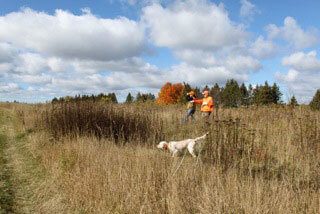 Walt explains that guided pheasant hunting at The Wilderness Reserve can suit hunters of all different levels, as well as their dogs. The reserve setting is a great way to try out a relatively inexperienced bird dog, and build their skills. Love pheasant hunting but don’t have your own gun dog? The Wilderness Reserve can happily accommodate you with a guide/dog pheasant hunting package.
Walt explains that guided pheasant hunting at The Wilderness Reserve can suit hunters of all different levels, as well as their dogs. The reserve setting is a great way to try out a relatively inexperienced bird dog, and build their skills. Love pheasant hunting but don’t have your own gun dog? The Wilderness Reserve can happily accommodate you with a guide/dog pheasant hunting package.
This challenging sport is also ideal for groups, whether you are planning a corporate retreat or a weekend getaway with friends or family. In addition, The Wilderness has shooting courses that are both good practice and fun. Plan your next visit to The Wilderness Reserve for guided pheasant hunting this pheasant hunting season, September through December!
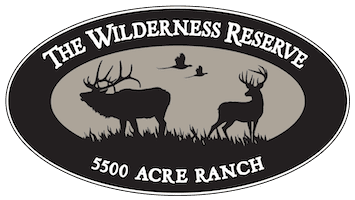
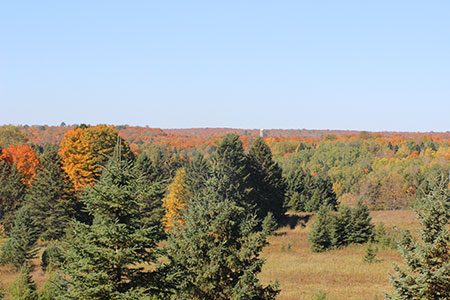
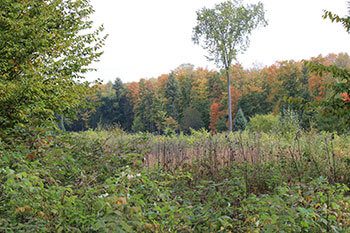 Ring-necked pheasants are not native to America, but imported here centuries ago from Asia. As a highly adaptive bird, they have made themselves at home here in the United States, and particularly in the Midwest region that offers the best habitats to suit their needs. Pheasants prefer grassy fields with ditches, marshes, and bushy groves and use the natural vegetation and contours of the environment to roost and hide.
Ring-necked pheasants are not native to America, but imported here centuries ago from Asia. As a highly adaptive bird, they have made themselves at home here in the United States, and particularly in the Midwest region that offers the best habitats to suit their needs. Pheasants prefer grassy fields with ditches, marshes, and bushy groves and use the natural vegetation and contours of the environment to roost and hide. The female pheasants, or hens, begin building a nest for her eggs in early spring. The nesting cycle of her year lasts from April through June. Over a two week period, the hen will lay about a dozen eggs, only incubating after the last egg is laid. The pheasant eggs hatch after 23-24 days, with the new chicks able to run and move about almost immediately. By 2 weeks of age, the chicks are able to fly and by 6 weeks, their adult feathers come in.
The female pheasants, or hens, begin building a nest for her eggs in early spring. The nesting cycle of her year lasts from April through June. Over a two week period, the hen will lay about a dozen eggs, only incubating after the last egg is laid. The pheasant eggs hatch after 23-24 days, with the new chicks able to run and move about almost immediately. By 2 weeks of age, the chicks are able to fly and by 6 weeks, their adult feathers come in.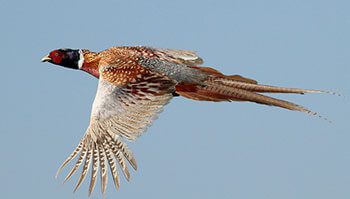 The average life span of a pheasant is typically only a year. Pheasants face danger from before they are even born, with natural predators destroying and devouring nests a frequent occurrence. And with predators like the wily fox, dogs and wildcats, the birds are forced to develop strong defensive behavior to survive. This is one of the reasons that pheasant hunting presents such a great challenge to hunters.
The average life span of a pheasant is typically only a year. Pheasants face danger from before they are even born, with natural predators destroying and devouring nests a frequent occurrence. And with predators like the wily fox, dogs and wildcats, the birds are forced to develop strong defensive behavior to survive. This is one of the reasons that pheasant hunting presents such a great challenge to hunters.